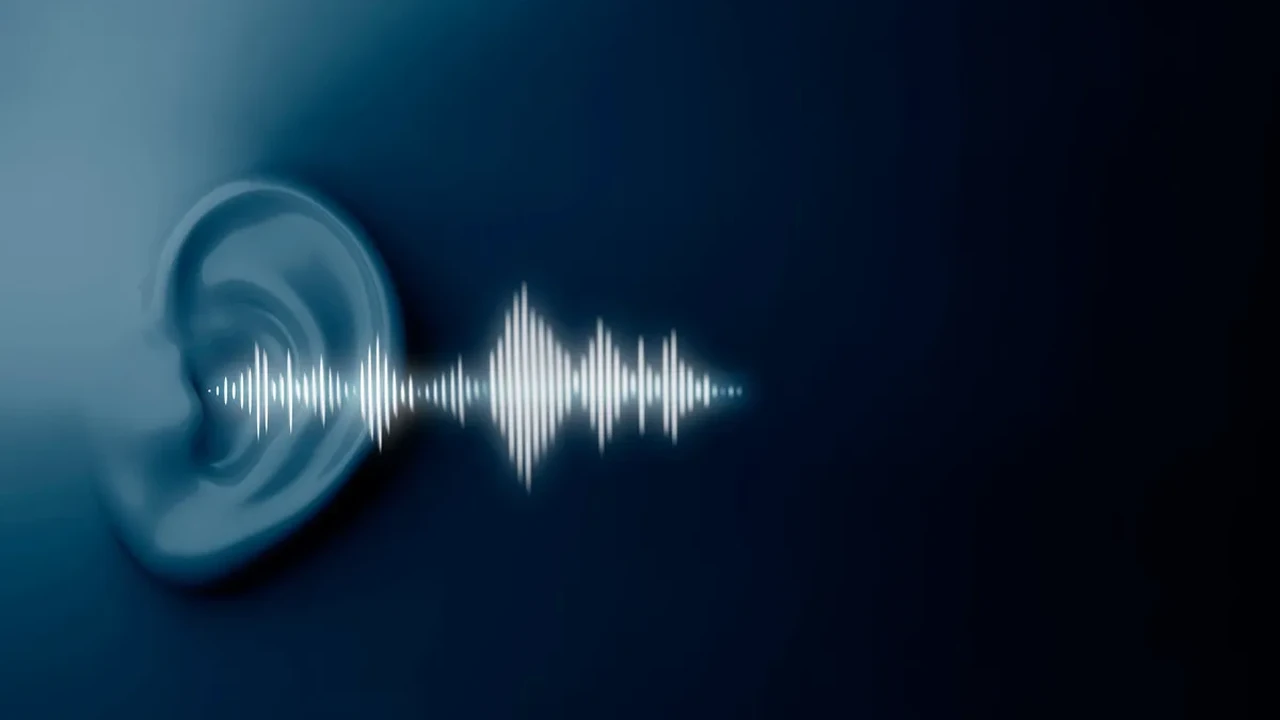Best Hearing Aids For Noisy Environments
Discover the best hearing aids equipped with advanced noise reduction technology. Improve your listening experience in challenging, loud settings.

Discover the best hearing aids equipped with advanced noise reduction technology. Improve your listening experience in challenging, loud settings.
Best Hearing Aids For Noisy Environments
Let's face it, noisy environments can be a real headache, especially if you're dealing with hearing loss. Imagine trying to have a conversation at a bustling restaurant, a lively family gathering, or even just a busy street. It can feel like everyone else is speaking a different language, or worse, like you're completely cut off from the world around you. Traditional hearing aids, while helpful, often struggle in these complex soundscapes, amplifying everything – including the noise you don't want to hear. But here's the good news: modern hearing aid technology has come a long, long way, specifically designed to tackle these challenging situations head-on. We're talking about advanced noise reduction, directional microphones, and even artificial intelligence working together to help you hear what matters most, even when the world gets loud.
In this comprehensive guide, we're going to dive deep into the world of hearing aids built for noise. We'll explore the key technologies that make them so effective, compare some of the top models on the market, and give you practical advice on how to choose the best device for your specific needs and lifestyle. Whether you're a social butterfly who loves crowded places, a professional who attends many meetings, or simply someone who wants to enjoy everyday life without the constant struggle of background noise, this article is for you. Let's get started on finding your perfect hearing companion!
Understanding Noise Reduction Technology in Hearing Aids
So, what exactly makes a hearing aid good in noisy environments? It all comes down to some pretty clever technology working behind the scenes. It's not just about making everything louder; it's about making the right things louder and the wrong things quieter. Think of it like a smart filter for your ears.
Directional Microphones for Enhanced Speech in Noise
One of the most crucial features is directional microphones. Most modern hearing aids come equipped with at least two microphones on each device. These aren't just for show; they work together to create a 'beam' of sound. When you're in a noisy place, your hearing aids can automatically (or sometimes manually) switch to a directional mode. This means they focus on sounds coming from in front of you – where the person you're talking to usually is – and reduce sounds coming from the sides and behind. It's like having a spotlight for speech, cutting through the surrounding chatter. The more advanced the directional system, the better it is at pinpointing speech and suppressing noise from other directions. Some premium models even have adaptive directional microphones that can track multiple speakers or adjust their focus as you move.
Advanced Noise Reduction Algorithms for Clarity
Beyond directional microphones, hearing aids employ sophisticated noise reduction algorithms. These are like tiny supercomputers inside your hearing aids constantly analyzing the incoming sound. They can identify patterns that are characteristic of speech and differentiate them from patterns that are characteristic of various types of noise (like engine hum, fan noise, or general babble). Once identified, the algorithms can then reduce the volume of the noise without significantly affecting the speech. This isn't just a simple volume knob; it's a smart system that can distinguish between different types of noise and apply specific reduction strategies. For example, some algorithms are excellent at reducing wind noise, while others excel at suppressing sudden loud sounds or continuous background hum.
Speech Enhancement Features for Better Understanding
It's not enough to just reduce noise; you also need to make sure speech is clear and easy to understand. Many hearing aids include speech enhancement features that work in conjunction with noise reduction. These features can subtly boost the frequencies where human speech is most prominent, making voices stand out even more against a noisy backdrop. Some even use AI to learn and adapt to your specific listening preferences and the unique characteristics of different voices, further optimizing speech clarity.
Artificial Intelligence and Machine Learning for Adaptive Performance
The latest generation of hearing aids is incorporating Artificial Intelligence (AI) and machine learning. This is a game-changer for noisy environments. AI-powered hearing aids can learn from your listening experiences and adapt their settings in real-time. For instance, if you frequently visit a particular noisy cafe, the hearing aids can learn the sound profile of that environment and automatically apply the most effective noise reduction and speech enhancement settings the next time you're there. They can also analyze complex soundscapes and make incredibly fast, nuanced adjustments that a human audiologist might take much longer to program. This adaptive intelligence means less manual adjustment for you and a more seamless listening experience.
Automatic Program Switching for Seamless Transitions
Imagine walking from a quiet office into a busy street, then into a crowded restaurant. Manually changing your hearing aid settings for each environment would be a hassle. That's where automatic program switching comes in. Advanced hearing aids can detect changes in your acoustic environment and automatically switch to the most appropriate program. For example, they might switch from a 'quiet' program to a 'speech in noise' program, or even a 'music' program, all without you having to lift a finger. This ensures you're always getting the optimal sound processing for your current surroundings.
Top Hearing Aids for Noisy Environments Product Reviews
Now that we understand the technology, let's look at some of the best hearing aids currently on the market that excel in noisy environments. Keep in mind that the 'best' hearing aid is always subjective and depends on your specific hearing loss, lifestyle, and budget. However, these models consistently receive high marks for their performance in challenging listening situations.
Phonak Lumity Series for Exceptional Speech Focus
Phonak has long been a leader in hearing aid technology, and their Lumity series (including the Audeo Lumity and Naida Lumity) continues this tradition, particularly excelling in noisy environments. The Lumity platform features their advanced 'SmartSpeech Technology' which is specifically designed to enhance speech understanding in various challenging situations.
Key Features and Technology:
- StereoZoom 2.0: This is Phonak's flagship directional microphone technology. It creates an ultra-narrow, adaptive focus on speech from the front, significantly reducing background noise. It's incredibly effective in one-on-one conversations in loud places.
- SpeechSensor: This feature automatically detects the main speech source, whether it's in front, to the sides, or behind you, and adjusts the directional microphones accordingly. This is fantastic for group conversations where speakers might be all around you.
- Dynamic Noise Cancellation: Lumity uses a sophisticated noise cancellation system that can reduce up to 25% more noise in loud environments compared to previous generations, without compromising speech clarity.
- AutoSense OS 5.0: This operating system intelligently analyzes your sound environment every 0.4 seconds and blends multiple programs to create the optimal listening experience. It seamlessly transitions between quiet, speech in noise, comfort in noise, and other programs.
- Universal Bluetooth Connectivity: Connects directly to iOS, Android, and other Bluetooth-enabled devices for streaming calls, music, and podcasts directly to your hearing aids.
- Rechargeable Options: Most Lumity models are available in rechargeable versions, offering a full day of hearing on a single charge.
Ideal Use Cases:
- Busy restaurants and cafes
- Family gatherings with multiple conversations
- Work meetings with many participants
- Social events and parties
Estimated Price Range:
Phonak Lumity hearing aids typically range from $2,500 to $7,000 per pair, depending on the technology level (e.g., L30, L50, L70, L90) and the provider.
Oticon Intent for BrainHearing Technology
Oticon takes a unique approach with its 'BrainHearing' philosophy, focusing on helping your brain make sense of sound, rather than just filtering it. Their latest platform, Intent, builds on this, offering exceptional performance in complex listening environments by providing access to all relevant sounds, allowing the brain to choose what to focus on.
Key Features and Technology:
- MoreSound Intelligence 3.0: This system provides a full 360-degree soundscape, then uses a Deep Neural Network (DNN) trained on millions of real-life sound scenes to process sounds with incredible precision. It helps your brain identify and prioritize speech even in very noisy environments.
- MoreSound Amplifier 3.0: This feature ensures that all sounds are delivered clearly and precisely to your brain, optimizing the signal-to-noise ratio for better speech understanding.
- Speech Enhancer: Specifically designed to boost speech signals, making conversations clearer and easier to follow in noisy settings.
- Spatial Sound: Helps you locate where sounds are coming from, which is crucial for navigating complex soundscapes and understanding who is speaking.
- 4D Sensor Technology: Intent is the world's first hearing aid with 4D Sensor technology, understanding your head and body movements, conversation activity, and the acoustic environment to provide personalized support. This helps optimize noise reduction based on your current activity.
- Bluetooth LE Audio: Supports the latest Bluetooth standard for future-proof connectivity, offering improved audio quality and lower power consumption for streaming.
- Rechargeable Options: Available in rechargeable miniRITE styles, offering long-lasting power.
Ideal Use Cases:
- Dynamic social gatherings where multiple conversations are happening
- Environments where you need to be aware of your surroundings (e.g., walking in a city)
- Situations requiring quick shifts in attention between speakers
Estimated Price Range:
Oticon Intent hearing aids typically range from $2,800 to $7,500 per pair, depending on the technology level and provider.
Resound Nexia for Ultra-Focus and Connectivity
Resound's Nexia platform is designed to offer a more natural hearing experience with a strong emphasis on connectivity and excellent performance in noise. It introduces new technologies that aim to make hearing effortless, even in the most challenging sound environments.
Key Features and Technology:
- Front Focus and Ultra Focus: Nexia offers advanced directional microphone modes. 'Front Focus' enhances speech from the front, while 'Ultra Focus' creates an even narrower beam, ideal for very noisy one-on-one conversations.
- Environmental Optimizer II: This system automatically analyzes the sound environment and adjusts the hearing aid settings to optimize sound quality and comfort, reducing unwanted noise.
- DFS Ultra III: Resound's feedback management system effectively eliminates whistling without compromising sound quality, which is crucial in dynamic environments.
- M&RIE (Microphone & Receiver-In-Ear): For some models, M&RIE uses a microphone placed inside the ear canal, leveraging the natural acoustics of your ear for a more natural sound experience and better spatial awareness, which can aid in separating speech from noise.
- Bluetooth LE Audio and Auracast Ready: Nexia is one of the first hearing aids to support Bluetooth LE Audio, offering superior streaming quality and lower power consumption. It's also 'Auracast ready,' meaning it can connect to public Auracast broadcasts in the future, which could revolutionize hearing in public spaces like airports or theaters.
- Rechargeable Options: Available in sleek, rechargeable designs, providing reliable power throughout the day.
Ideal Use Cases:
- Users who prioritize seamless connectivity and future-proof technology
- Individuals who frequently engage in one-on-one conversations in very loud settings
- Those who value a natural sound experience and spatial awareness
Estimated Price Range:
Resound Nexia hearing aids typically range from $2,400 to $6,800 per pair, depending on the technology level and provider.
Starkey Genesis AI for AI-Powered Performance
Starkey's Genesis AI hearing aids are at the forefront of artificial intelligence integration, offering a highly personalized and adaptive listening experience. Their AI capabilities are particularly beneficial in complex and noisy environments, as the devices learn and optimize over time.
Key Features and Technology:
- Neuro Sound Technology: This proprietary technology mimics the way the human brain processes sound, filling in gaps caused by hearing loss and enhancing speech clarity, especially in noise.
- Edge Mode+: A powerful on-demand AI feature that, with a double tap, instantly scans your environment and optimizes sound for speech in noise, even in the most challenging situations. It's like having an instant boost for clarity.
- IntelliVoice: This feature uses AI to enhance the clarity of human voices, making conversations easier to follow in noisy settings.
- Automatic Environmental Adaptation: Genesis AI constantly monitors your environment and makes up to 80 million personalized adjustments per hour, ensuring optimal sound quality and noise reduction without manual intervention.
- Health Tracking Features: Beyond hearing, Genesis AI offers health tracking features like activity tracking and fall detection, adding extra value.
- Universal Bluetooth Connectivity: Seamlessly connects to both iOS and Android devices for streaming and hands-free calls.
- Rechargeable Options: Available in various rechargeable styles, including a discreet custom in-ear option.
Ideal Use Cases:
- Users who want the most advanced AI and personalized sound optimization
- Individuals who frequently encounter highly variable and challenging noise levels
- Those interested in integrated health tracking features
Estimated Price Range:
Starkey Genesis AI hearing aids typically range from $2,700 to $7,200 per pair, depending on the technology level and provider.
Widex Moment Sheer for Natural Sound and Clarity
Widex is renowned for its natural sound quality, and the Moment Sheer platform continues this legacy, offering exceptional clarity and comfort, even in noisy environments. Their unique processing aims to eliminate the artificial sound often associated with hearing aids.
Key Features and Technology:
- PureSound with ZeroDelay Technology: This is Widex's signature feature. It processes sound so quickly that it virtually eliminates the delay that can cause an artificial, 'tinny' sound. This results in a much more natural and clear sound, making it easier to distinguish speech from noise.
- SoundSense Learn: An AI-powered feature within the app that allows you to personalize your sound experience. You can compare different sound profiles in real-time and train the AI to optimize settings for specific noisy environments you frequent.
- True Acoustic Feedback Canceller: Effectively suppresses feedback without compromising the natural sound quality, which is important when trying to hear in complex soundscapes.
- Speech Enhancer: Specifically designed to boost speech signals, making conversations clearer and easier to follow in noisy settings.
- Sound Class Technology: Automatically categorizes your listening environment and applies the most appropriate sound processing strategy, including advanced noise reduction for loud situations.
- Universal Bluetooth Connectivity: Connects to iOS and Android devices for streaming.
- Rechargeable Options: Available in a range of rechargeable styles, including the discreet mRIC R D.
Ideal Use Cases:
- Users who prioritize natural sound quality and comfort above all else
- Individuals who find traditional hearing aid sound artificial or fatiguing
- Those who want to fine-tune their hearing experience with AI-driven personalization
Estimated Price Range:
Widex Moment Sheer hearing aids typically range from $2,300 to $6,500 per pair, depending on the technology level and provider.
Factors to Consider When Choosing Hearing Aids for Noise
Picking the right hearing aid isn't a one-size-fits-all situation. While the models above are excellent, your personal needs will dictate the best choice. Here are some key factors to keep in mind:
Your Specific Hearing Loss Level and Type
The severity and type of your hearing loss (e.g., mild, moderate, severe, profound; sensorineural, conductive) will significantly influence which hearing aids are suitable. Some hearing aids are better equipped to handle more severe losses, offering greater amplification and power. An audiologist will perform a comprehensive hearing test and recommend devices that can effectively address your specific audiogram.
Your Lifestyle and Common Noisy Environments
Think about your daily life. Do you frequently attend large social gatherings, work in an open-plan office, or enjoy concerts? Or are your noisy environments more occasional, like a family dinner? If you spend a lot of time in highly dynamic and loud places, you'll want premium features like advanced directional microphones, sophisticated noise reduction, and AI-driven adaptation. If your noisy encounters are less frequent, a mid-range model might suffice.
Budget and Financing Options for Hearing Aids
Hearing aids are a significant investment. Prices can vary widely based on brand, technology level, and included services. While premium models offer the best performance in noise, there are often excellent mid-range options that provide substantial benefits. Explore financing options, insurance coverage, and potential government programs to help manage the cost. Remember, the value of improved communication and quality of life often outweighs the initial expense.
Comfort and Fit of Hearing Aids
Even the most technologically advanced hearing aid is useless if it's uncomfortable. Ensure you try on different styles (Behind-The-Ear, Receiver-In-Canal, In-The-Ear) and work with your audiologist to get a precise fit. Custom earmolds can significantly improve comfort and sound quality, especially in noisy environments by preventing sound leakage and feedback.
Connectivity and Streaming Features
Do you want to stream phone calls, music, or podcasts directly to your hearing aids? Do you use a smartphone frequently? Most modern hearing aids offer Bluetooth connectivity, but the quality and ease of connection can vary. Consider if you need universal compatibility (iOS and Android) or if a specific operating system is sufficient. Features like hands-free calling can be a huge advantage in noisy settings.
Battery Life and Rechargeable Options
For those who are always on the go, rechargeable hearing aids offer immense convenience. A full day's charge means no fumbling with tiny batteries. If you prefer disposable batteries, consider their lifespan and ease of replacement. Some rechargeable models also come with portable charging cases, which are great for travel.
Trial Periods and Aftercare Services
Always inquire about trial periods. Most reputable providers offer a risk-free trial (typically 30-60 days) where you can test the hearing aids in your real-life environments, including noisy ones. This is crucial for ensuring the devices meet your expectations. Also, understand what aftercare services are included, such as follow-up adjustments, cleaning, and maintenance. Ongoing support from your audiologist is vital for long-term success.
Maximizing Your Hearing Aid Performance in Noise
Getting the right hearing aids is a huge step, but there are also strategies you can employ to get the absolute best performance out of them, especially in noisy environments.
Working Closely with Your Audiologist for Optimal Settings
Your audiologist is your best friend in this journey. They can fine-tune your hearing aids to your specific hearing loss and preferences. Don't hesitate to tell them about your most challenging listening situations. They can create custom programs for specific noisy environments you frequent, or adjust the noise reduction and speech enhancement settings to be more aggressive if needed. Regular follow-up appointments are crucial for these adjustments.
Utilizing Hearing Aid Accessories for Enhanced Listening
Sometimes, even the best hearing aids need a little help. Accessories can make a big difference:
- Remote Microphones: Devices like Phonak's PartnerMic or Oticon's ConnectClip are game-changers. You can give a remote microphone to the person speaking, and their voice will stream directly to your hearing aids, cutting through all background noise. This is fantastic for lectures, meetings, or even noisy dinner tables.
- TV Streamers: These devices send audio from your TV directly to your hearing aids, allowing you to hear the dialogue clearly without turning up the TV volume for everyone else.
- Smartphone Apps: Most modern hearing aids come with companion apps that allow you to adjust volume, switch programs, and even fine-tune noise reduction settings directly from your phone. Some apps even have features like 'sound equalizer' to personalize your listening experience.
Communication Strategies in Noisy Environments
Even with advanced hearing aids, good communication strategies are still essential:
- Position Yourself Strategically: Try to sit with your back to the noise source, or in a quieter corner of a room. Position yourself so you can see the speaker's face clearly, as lip-reading and facial cues provide valuable context.
- Inform Others About Your Hearing Loss: Don't be shy! Let people know you wear hearing aids and might need them to speak a bit clearer or face you directly. Most people are happy to accommodate.
- Take Breaks: Listening in noisy environments can be fatiguing. Don't be afraid to step away for a few minutes to give your brain a rest.
- Focus on One Speaker: Try to direct your attention to one person at a time. Your hearing aids will help, but your brain's focus is still key.
The Future of Hearing Aids in Noise
The technology in hearing aids is constantly evolving, and the future looks incredibly promising for those who struggle with noise. We can expect even more sophisticated AI and machine learning, leading to hearing aids that are not just reactive but truly predictive, anticipating your listening needs before you even realize them.
Imagine hearing aids that can map an entire room's acoustics and create a personalized sound bubble around you, or devices that can translate foreign languages in real-time while filtering out background chatter. Bluetooth LE Audio and Auracast are set to revolutionize public listening, allowing you to connect directly to audio streams in public venues, making airports, theaters, and gyms much more accessible. Miniaturization will continue, leading to even more discreet and comfortable devices, while battery technology will offer longer life and faster charging. The goal is an effortless, natural hearing experience, no matter how loud or complex the environment.
Choosing the right hearing aids for noisy environments can dramatically improve your quality of life, allowing you to participate more fully in conversations, social events, and everyday activities. By understanding the technology, exploring top models, and working closely with your audiologist, you can find the perfect solution to help you hear clearly, even when the world gets loud.
:max_bytes(150000):strip_icc()/277019-baked-pork-chops-with-cream-of-mushroom-soup-DDMFS-beauty-4x3-BG-7505-5762b731cf30447d9cbbbbbf387beafa.jpg)






